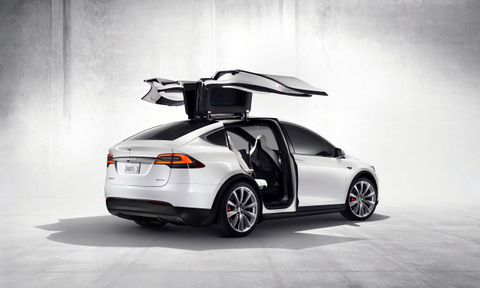Robotaxis Are Going To Be a Challenge for Tesla
Tesla’s plan to launch its own autonomous ride-hailing network appears to be moving full speed ahead as Elon Musk revealed during the company’s third quarter earnings call on October 23, 2019, that the company’s “robotaxi” functionality should be ready by the end of next year. Musk speculated that the value of Tesla vehicles could increase significantly, given that fully self-driving cars will be far more valuable to owners who can earn money deploying them on the Tesla Network.

On the surface Musk’s plan may seem like a logical way for Tesla to capture additional value and improve its financial performance. But Tesla isn’t likely to succeed in the ride-hailing market, and fighting what is sure to be an uphill battle is an expensive proposition. Aside from the technical challenges that remain to achieve autonomous driving, engaging in direct competition with the industry heavyweights, Uber and Lyft, may prove even more daunting.
Here are three reasons why:
- AV tech will improve the service of Tesla’s soon-to-be competitors—Uber and Lyft
A common mistake among autonomous vehicle (AV) industry watchers is to assume that AVs are disruptive, and therefore the advent of AVs presents an opening for autonomous entrants to unseat Uber and Lyft. While it is true that an autonomous ride-hailing service might out-compete the ride-hailing giants on price if they do nothing, this scenario is far-fetched given the powerful incentives these incumbents have to adopt AV technology.

AVs are in fact a sustaining innovation to Uber and Lyft, meaning that they hold the potential to improve their existing service and enhance their profitability. AVs may help them offer safer rides at a lower cost, thereby strengthening their value proposition to riders. A shift to AVs would also allow the ride-hailing networks to save on the largest expense they incur—the cost of human drivers. As operating losses continue to mount amid price wars and the scramble for growth, Uber and Lyft will strongly gravitate towards innovations that could improve their profitability.
2. Uber and Lyft’s business model can embrace AV technology
There are plenty of examples of new technologies that bring about the downfall of incumbents because they are unable to adopt them. For instance, Western Union failed to adopt voice-based telephony and lost its leadership position to AT&T. But it isn’t the radicalness of a technology that can prove fatal to incumbents; rather it’s their inability to commercialize the technology inside their existing business models. Western Union was unable to adopt voice-based telephony because the technology could not be used over long distances at the outset, limiting the initial market size and thus its financial attractiveness to a big company. Western Union’s business model rejected the new technology, not its engineers.
However, in the case of AVs, Uber and Lyft’s business models will welcome them with open arms since adopting AVs won’t fundamentally change the way the firms make money. Assuming that Uber and Lyft choose not to directly own vehicles, the transition to AVs for ride-hailing networks is one of the easier business model changes to make. It is simply swapping out one type of resource—human drivers—for another—autonomous “drivers.” Evidence of their attractiveness to Uber and Lyft is the hundreds of millions of dollars per year the firms collectively spend on their in-house AV efforts.
3. Uber and Lyft can offer a more comprehensive service than Tesla (or any all-autonomous service)
Uber and Lyft’s network of human drivers will continue to be important as the transition to autonomy unfolds. Early AV deployments will likely be restricted to geo-fenced areas, meaning that all-autonomous services will not be able to take customers outside those areas. In contrast, the ride-hailing incumbents won’t face such a restriction; they’ll simply deploy a human driver when routes extend beyond geo-fenced areas. Until AVs can travel everywhere, this type of hybrid network will be a significant competitive advantage over a fully autonomous service.
Not Impossible, But Very Expensive

That’s not to say that Tesla will be unable to get the Tesla Network off the ground. But the ensuing competition with entrenched incumbents like Uber and Lyft will be intense and expensive. If Tesla insists on barreling its way into the ride-hailing market, it will likely require billions of dollars of red ink. For instance, matching Uber and Lyft’s liquidity in areas where there aren’t enough customer-owned AVs will call for supplementing the fleet with Tesla-owned AVs, which will entail a massive balance sheet commitment. Also, Tesla will have to invest in the same type of expensive customer acquisition and pricing strategies that have weighed down Uber and Lyft.
At a time when Tesla is just turning the corner on profitability, that may be a price too high to pay.

1 thought on “Analysis: The Trouble with the Tesla Network”